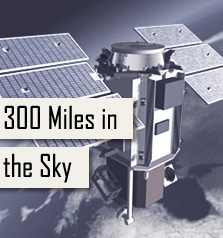
“Today, any event, anywhere on the planet, could be broadcast globally in seconds,” stated Acting Under Secretary for Arms Control and International Security Rose Gottemoeller in an address delivered to a group of students at the Moscow State Institute of International Relations on March 30. “That means it is harder to hide things. When it is harder to hide things, it is easier to be caught.”
The speech, entitled “Arms Control in the Information Age,” focused on the new rapid-sharing climate of global media and its effects on arms control and monitoring. Gottemoeller cited the Satellite Sentinel Project, or SSP, as an example of the future of monitoring mechanisms. “The neighborhood gaze is a powerful tool, and it can help us make sure that countries are following the rules of arms control treaties and agreements,” she said.
The Under Secretary is on a European tour visiting the capitals of Germany, Russia, Estonia, and the United Kingdom. The trip marks the one-year anniversary of the New START Treaty (Strategic Arms Reduction Treaty), which the U.S. and Russia signed in April 2010 and began implementing in February 2011.
Gottemoeller’s mention of SSP denotes the broader acceptance of the SSP model into areas of international reporting beyond human rights abuses in the Sudans.“The synergy is stunning—private citizens and groups conduct their own monitoring project, analyze the information, and then publicize the results via traditional news and social media networks,” she added.
Gottemoeller called on her audience to “think bigger and bolder” and apply new technologies to help enforce the New START Treaty. She suggested that crowd-sourcing, open source data, and social media —technologies already in use by SSP and increasingly by the NGO community—could be applied to nuclear weapons verification inspections. Observation satellites are already part of the National Technical Means, or NTM, arsenals allowed by each country to monitor treaties. NTMs are big assets, including satellites and radar detection systems that countries can legally use to monitor and verify the treaty’s implementation. However, open source technology adds another layer to these monitoring mechanisms, allowing the public to see, contribute, and verify information.
Under Secretary Gottemoeller outlined a future of nuclear weapons treaty monitoring that parallels SSP’s already successful model of crisis monitoring. Gottemoeller suggested that open-source public verification systems would give governments extra incentive to prove they are meeting their arms reduction obligations. “Data mining”—harvesting information via social networks—would give analysts and monitors the ability to see patterns and trends, drawing attention to abnormal events. This would direct the use of NTMs, deciding when and where to use satellite monitoring.
SSP has already incorporated this model into its operations by using open-source information and communication with on-the-ground eyewitnesses to task satellites. Gottemoeller described SSP’s collaborative process:
DigitalGlobe satellites passing over Sudan and South Sudan capture imagery of potential threats to civilians. The satellites can pick up types and varieties of helicopters, tanks and multiple rocket launch systems, among many other items of concern. The Harvard Humanitarian Initiative analyzes imagery and information from sources on the ground to produce reports. The Enough Project then releases the reports to the press and policymakers and sounds the alarm by notifying the news media and civic groups.
SSP serves as a model going forward for other NGO and government initiatives that aim to combine the power of public information sharing with the technology of satellite monitoring.
Photo: Image of a satellite (SSP)

